My wildlife photography is a journey of persistence and perfection that continues in my life to this day. Maybe I should better phrase the “perfection” part of that statement – wildlife photography is a never-ending journey to get more perfect photos that you are proud of.
So the title of the article is rather dramatic, or is it not?
Actually, depending on what wildlife you are trying to photograph, many subjects can be dangerous and can definitely hurt or cause serious bodily harm. The purpose of this article is not to be dramatic, or scare you away from photographing those animals, but to make you aware of what you need to know.
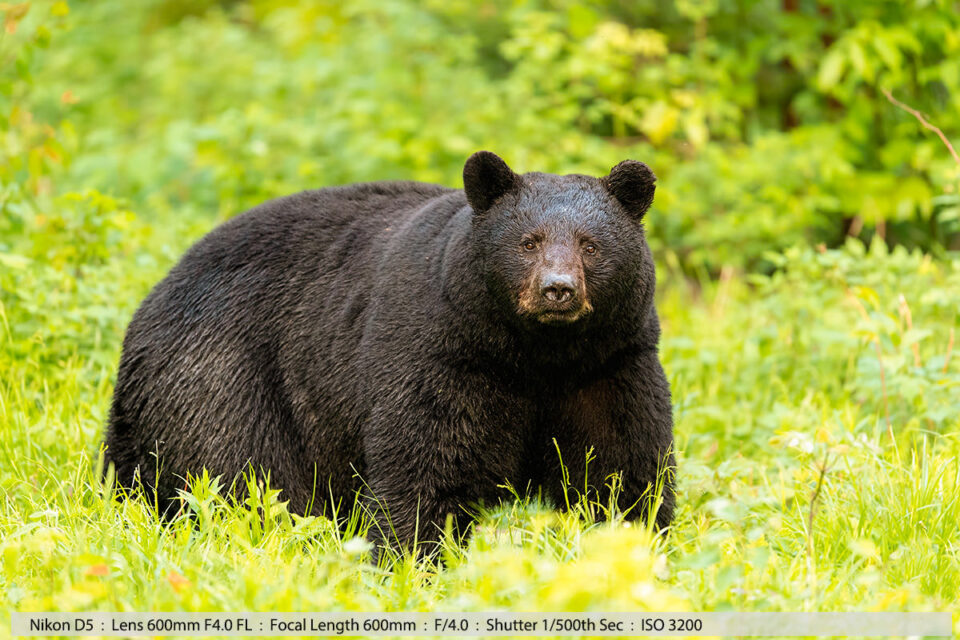
This is a large male black bear in New Hampshire, free and wild, not in any kind of tourist area or sanctuary where its behavior might be more subdued or even calm. So, while I am comfortable photographing this bear, I am super conscious of the risks and how I plan to behave if a situation arises.
Understanding Risk and Behavior
Let me state a disclaimer up-front. I am not an animal expert, I am not a biologist or any kind of expert on animal behavior. I am a wildlife photographer. Wildlife photography comes with certain risks – it is irresponsible for you to venture out to photograph wild and/or dangerous wildlife subjects without understanding the risks.
What does this mean?
It means as a responsible wildlife photographer, you need to educate yourself on how wild animals behave and the danger signs for those animals before you go out in the wild, most definitely not after you are half dead and have had a dangerous encounter!
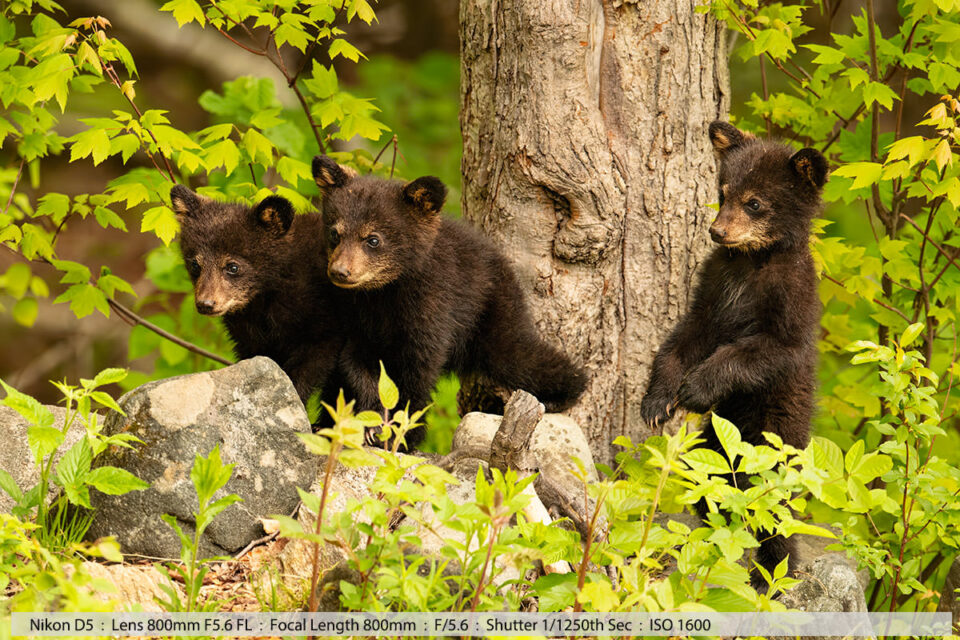
The above image looks so cute, so playful, but where is the mama? The location and mood of the adult female is the danger in this situation, and she needs to be respected, and her comfort zone needs to be respected.
She will be very defensive and protective of her three cubs, so do not wander into this situation with dumb ignorance and oblivious to the danger you are placing yourself in. You must respect the wildlife you are photographing.
Even in locations where wildlife like black bears are more comfortable with humans and don’t seem to mind you being there, complacency and willful ignorance can get you in trouble. Do I seem to be repeating myself a little?
Yes, I am, and it’s to get a point across.
You have a responsibility as a wildlife photographer, both for your safety and that of the subject. What happens when a bear attacks a human and the human survives? In most, but not all cases, some form of wildlife officer, will track down and kill the offending animal that now, has been defined as an aggressive animal. The idiocy or stupidity of the photographer is usually not taken into account, and the animal suffers the consequence.
Understanding the Subject
Animals communicate a lot with body language, which is usually the language that humans tend to be oblivious to.
To learn the subject, you need to educate yourself before going out (Google, biologist, park ranger, etc).
Let’s take our bear example a step further, including the larger and more powerful grizzly in the bear family.
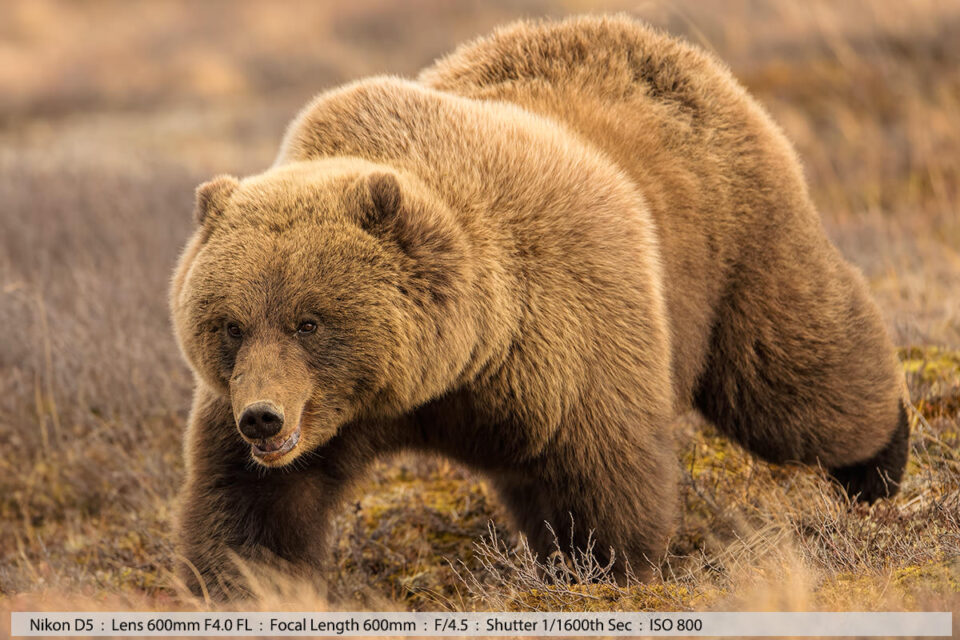
This grizzly photo was taken in Denali National Park. It was a moment of opportunity and much safer than it looks. The grizzly was actually approaching the road going through the park, we stayed in our vehicle, used the car as the blind and the safe zone. We poked our lenses out of open windows and kept the car at a safe distance. The 600mm focal length on a large subject like the grizzly makes it look more imposing, and as if we were on top of it, but that is the illusion of the photo.
Bear Safety
These are rules I use for my photography in the field, what rules will you set for yourself?
- Do not run from any predator that is right on top of or near you, it will most likely trigger the predator’s hunting instinct and initiate a chase and kill response.
- I am aware of the danger signs for both black bear and grizzly bear, I am aware of how I should react in a situation (easier said than done).
- I always carry two canisters of pepper spray, sometimes a marine flare when photographing bears. It’s not just that I carry these sprays, I have actually fired them off as a test (and it’s not nice – pepper burn for hours). I know the length of time they spray, I know at what distance they are effective.
- I understand the different reaction I might need to take if attacked by a grizzly versus a black bear. The general consensus is that a black bear is less likely to attack, but if it does, it most likely will intend to kill you. In this situation, I need to fight back. If a grizzly bear attacks, you are in big trouble, but a grizzly might stop its attack if it perceives the threat is gone. So in this instance, playing dead might save your life.
- I understand that keeping a safe distance from the bear is my best tool, and using longer lenses to photograph bears is desirable. In some places like Katmai, AK or Cades Cove, TN, where bears do not see humans at the same threat level, a closer approach is possible while remaining safe.
- I understand that certain locations present different danger levels, but even in safer bear zones, I can never be complacent and let my guard down.
- I am aware that direct eye contact may not be the best idea and should be avoided (this is a debated topic). I choose not to stare at any animal.
- I am aware that I cannot outrun a bear. My best defense is to stand my ground and/or slowly back away.
- I am aware that black bears can climb a tree almost as fast as running across a field.
- I am aware that in many cases, a black bear will bluff charge first.
- I am aware that surprising a bear in the woods is one of the most common ways to have a dangerous situation arise. Because of this, I make noise when traveling through woods or areas where bears live and wander. This is to let the bear know I am there, way before we have a close encounter. The point is to make the bear hear you first and avoid you, rather than have a conflict situation.
- I am aware that a grizzly is not very likely to climb a tree (not sure I can get my fat butt up a tree anyway).
Look, there are lots of things you need to be aware of. This list is by no means complete – it is just an example of a wildlife photographer’s self-education. No one can predict, how any of us will behave when approached by an angry animal, but, if we have not educated ourselves first, we could end up in bigger trouble than we ever could have imagined!

The image above shows a beautiful mama and her young cub. The cub is licking and smelling her lips to learn eating habits.
How to Get Bear Photos Safely
The best safety is bear awareness, all the things listed above, plus more. Location choice is a great bear photography tool. In certain locations, bears are photographed often by humans, and you can get much closer. Distance is helpful, it gives you time to observe and take defensive steps before the animal is too close.
Familiarity is also a good tool, maybe a bear visits certain areas frequently for food or just roams around in its home zone. Maybe over time, you can slowly condition the animal to your smell and presence. This is one of the main tools I use, I try to slowly introduce myself to the animal over time whenever possible, and I try to behave in a non-threatening manner.
I leave the scene if I feel my presence is not being tolerated. I never chase or approach the bear. I try to use blinds (natural or man-made). I try to have the animal accept me there over time. For the most part, I try to be invisible to the animal, both for safety, and to get more natural bear behavior which results in more awesome compositions.
The best shots I get are generally from known or frequently visited locations. Also, places like wildlife sanctuaries or national and state parks. Wherever you go to get your bear shots, think and act with safety for you and the bear in mind.
For the record, I have been bluff-charged twice while photographing bears and it’s very scary. I have also had a bear make clapping noises with its mouth, which is a sign the bear is concerned about me.
Moose Safety
Photographing moose is a passion for me, but here in New Hampshire, they are extremely difficult to get close to. I have photographed moose in NH since my first days as an aspirational wildlife photographer in the making. I take some personal risks with moose I probably shouldn’t, nothing stupid or anything like that, but maybe I feel more bulletproof with moose than I really should be.
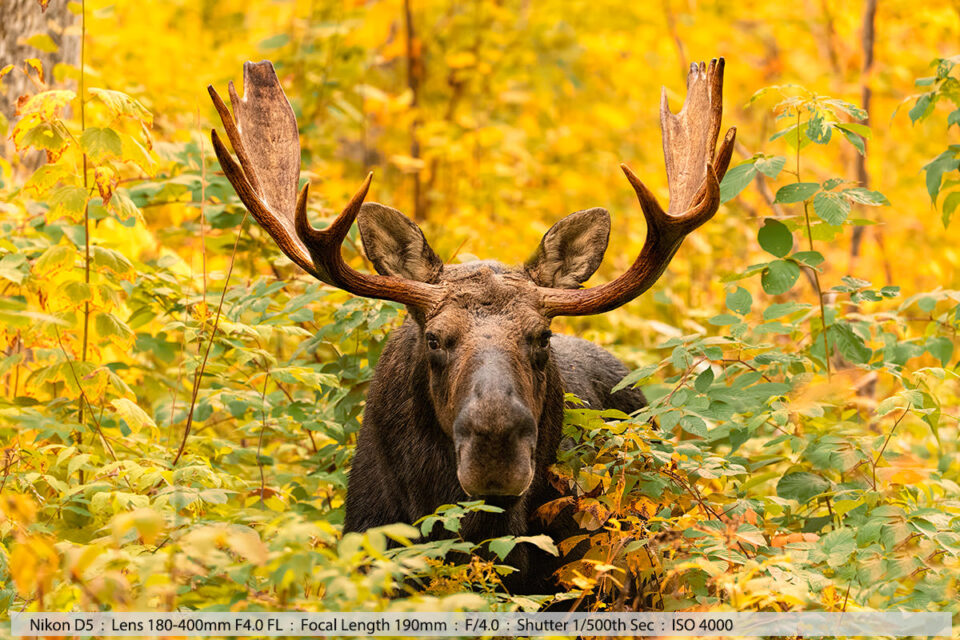
Oh, this image just speaks to me – years in the making!
Stunning New Hampshire foliage containing a beautiful specimen of a bull moose. For a local photographer trying to photograph local wildlife, it doesn’t get any better.
Moose also have defined body language signs that show the comfort or disposition of how the moose is feeling about your presence. I am a bit too passionate about moose for my own good. This is actually not a good disposition on my part, as moose can be very unpredictable.
I have a hunter guiding friend who was actually chased up a tree by a big aggressive bull moose. It then proceeded to stalk him at the tree. Eventually, he jumped off a ledge to escape. So those big loving, dopey eyes and mostly docile bulls can turn on a dime, get aggravated and charge at you. They are no joke when this happens.
Moose – Signs of Danger
If you are observant and have educated yourself on moose behavior, you will notice some signs easily:
- If the moose stops what it is doing and stares you down, be alert for complementary attack signs.
- If the moose starts to drool, it is a sign of fight or flight by the moose.
- If the moose lays its ears back, it could be a sign of potential aggression.
- If it raises the hair on its back or starts to rock its antlers back and forth.
- If it urinates itself, you are in big trouble, this is a bad sign of potential attack.
- If it clicks its teeth or makes warning grunts (loud bellows – can’t be mistaken).
- If a cow has a young calf with it, this can be way more dangerous than a bull on the prowl.
- During the “rut” (mating season), bulls can be easily agitated as they are on the prowl for a female lover, and are already being competitive with other bulls.
Look, the honest truth is, a moose could attack even without these signs. There is a thing called a brain worm that infests moose. You can’t always tell if the moose you are close to is infected, and such moose can be totally unpredictable, period!
Never get complacent photographing moose.
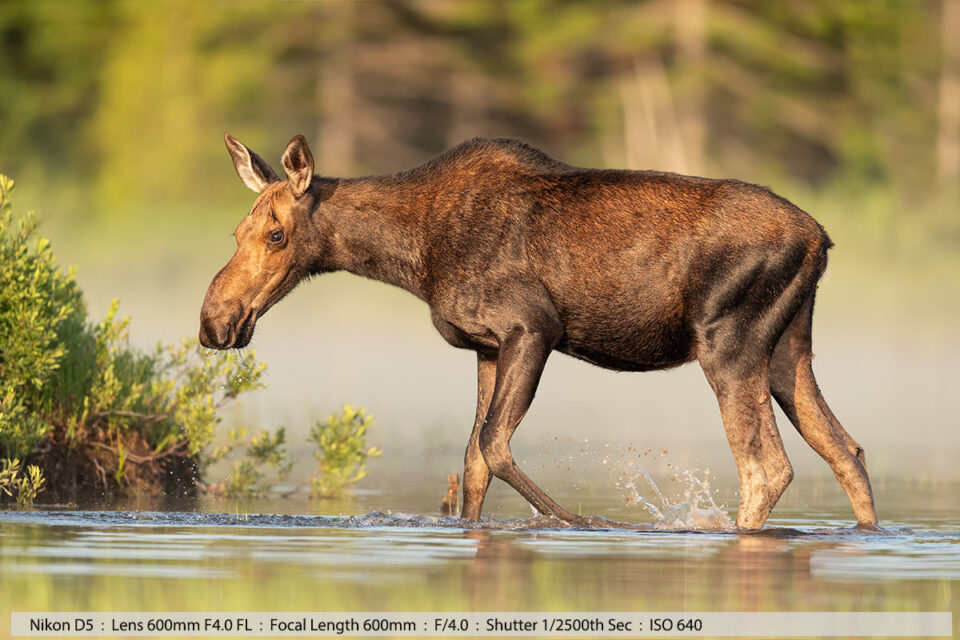
This is a photograph of a young moose feeding in a pond in Northern Maine at sunrise. The mama was there about 30 feet away. It was photographed from a canoe and I find moose more accepting of humans when they are in the water. I approach in a canoe very slowly.
How to Get Moose Photos Safely
I do take risks. Unfortunately, it is part of moose photography, but these are educated risks. I always have an escape path. I watch for those signs listed above. I always evaluate the area I am in for big solid trees I can use as a barrier between me and the moose. I try to keep my distance when I can. I am extremely stealthy and I stalk to get close enough without being seen or heard.
When I am not concentrating on local NH moose photography, I go to places like national parks (Yellowstone) or Alaska, where they are more tolerant of humans. Again, location choice can greatly increase your chances of amazing photos that can be much harder to get in your local area.
For me, to get the kind of local moose photos I aspire to get, I had to learn to hunt with a camera. No different than an actual hunter with a gun, except I use a camera.
That means I have learned the following skills to successfully photograph local moose:
- I know what moose scat looks like, I know if it’s fresh or old.
- I know what a moose hoof print looks like in the dirt. I can differentiate which way its walking and if it’s a hoofprint of a big bull moose.
- I know the premium time to increase my chances – the “rut” or mating season.
- I know what a “rutting pit” looks like, and signs of a moose’s home zone, I know the smell.
- I know what raking trees look like and if they contain fresh breakage.
- I have learned to call (speak) moose, not with an electronic caller, but with my mouth. Electronic callers are illegal in many places. So during the “rut” I actually bring moose into my photographic position.
- I know that moose are most active on cold mornings, early just at sunrise. They are also active in the evening, but I find mornings better.
- I know what a moose area looks like, what kind of habitat moose live in.
Essentially you can see that I learned some serious moose skills. This really applies to NH / ME / VT where moose are very skittish. In parks and sanctuaries, you may not need these skills.
Over the many years of moose photography, I have only been charged once. I was aware of the signs and saw it coming. It was still a scary event, but as soon as I saw the signs, I left the bull alone. His charge was more of a warning. I have also had a young bull moose in Alaska keep approaching my position, even as I yelled and screamed at it and waved my arms, it just kept on coming.
That was scary, even though he was a small bull. His approach was relentless, I think he was just super curious. I used my pepper spray to spray towards him, hoping he would leave. I am not sure the pepper spray did anything… In the end, I hid behind some small pine trees and tried not to move and become a bit invisible to him.
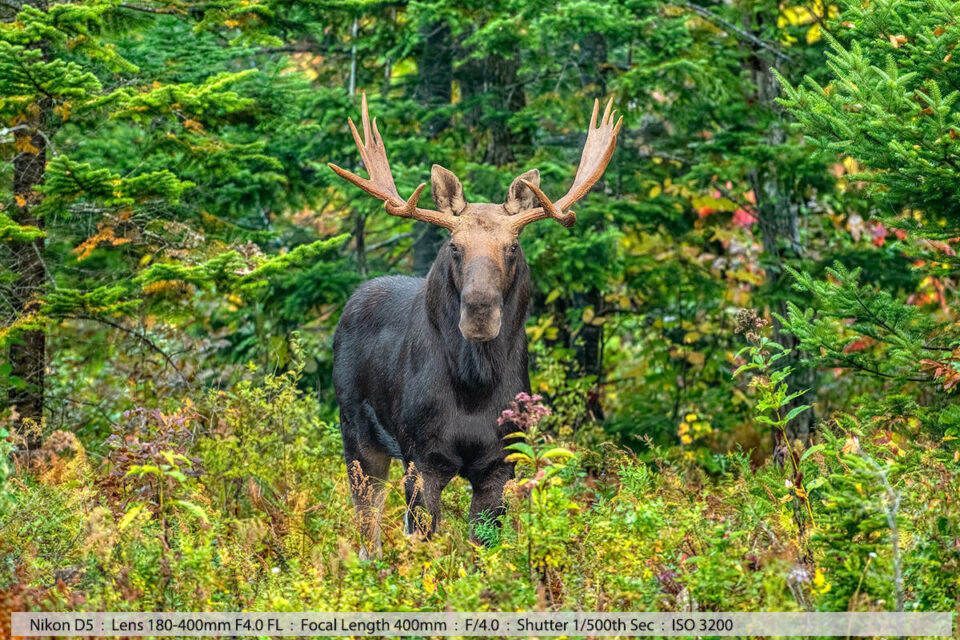
Summary of Dangers to Photographers
I cannot go through every subject or animal and the dangers involved, but you should be getting the drift of what I am trying to convey to you as a wildlife photographer.
This self-education on wildlife behavior applies to many other subjects. The list is endless (elk, bison, wolves, snakes, pronghorn, sharks – you name it).
Just to show you how easy things can happen, I have a photo in my portfolio of a bull elk and his harem of cows running towards me at full pace. I was in the open, a decent distance away. Another photographer approached from behind the herd, they got spooked, panicked and ran at full pace.
Unfortunately, they ran towards me. I got very scared, but my instinct was actually to focus my camera on them and take a photo (I don’t have an answer for that reaction). Luckily, the herd turned 90 degrees in front of me and ran off. This whole thing was out of my control, it all got started by another photographer, and I am sure he didn’t mean for that to happen.
The Danger You Present to the Wildlife
It’s not always just the danger to you as the photographer you need to consider. By doing some research, you can educate yourself if an animal might abandon its young or a nest if it is harassed too much by a close encounter with a human being.
Here are some examples of what I mean:
- A black bear mama could actually abandon its cubs if disturbed near a den, or it runs away to escape the perceived danger of a human encounter.
- Continuous human activity near a bald eagle nest may cause nest desertion and abandonment for the breeding season, even with chicks present in the nest.
- Common loons will leave their nest when humans approach the nest. This puts the eggs and or the chicks at risk while the nest is abandoned. Repeated harassment of loons on a nest could get them to totally abandon the nest for the season.

This is a photo of a bald eagle fly-by as it heads towards its nest. It actually came pretty close to our boat on its own free will.
How to Photograph Loons and Eagles
The lessons I have learned over the years is not to chase or harass the subjects, to slowly blend into their environment. I let the eagles or loons become comfortable with my presence. I definitely use longer lenses for loons on a nest, or even when swimming in the water.
I find ponds or bodies of water where they are used to humans and can be approached without distress. I often just sit in their body of water near their home turf. They often approach and check out who I am and why I’m there. I have had loons pop out of the water, right next to my canoe.
This is not as aggressive as chasing them or intruding on their home turf, but it is way more satisfying, and the resulting photos are much better. The more you chase, the faster they run, the more distressed they become. Make yourself invisible (not literally), behave as if you don’t even know they are there or that you care they are there.
Sometimes I will look away, pretend to fish or even move my canoe away. They relax over time and get comfortable. This is when you take your shots. Little by little you will build a portfolio. Don’t overstay your welcome, don’t get greedy.

This common loon (photo above) with two chicks was photographed on a small local lake because the loons constantly live in close proximity to lake homes and people using the water in their watercraft. The loons were very comfortable being photographed. This makes for an ideal photographic situation – just don’t abuse that trust.
Wildlife photography is a long-haul game. It takes years to build a great portfolio. I made many mistakes at the beginning. I was even uneducated on the wildlife dangers at times. That has all changed, and I have become a more responsible wildlife photographer. Now I sense when to leave, sense when to stay. I know when I’m going to get the shot or not.
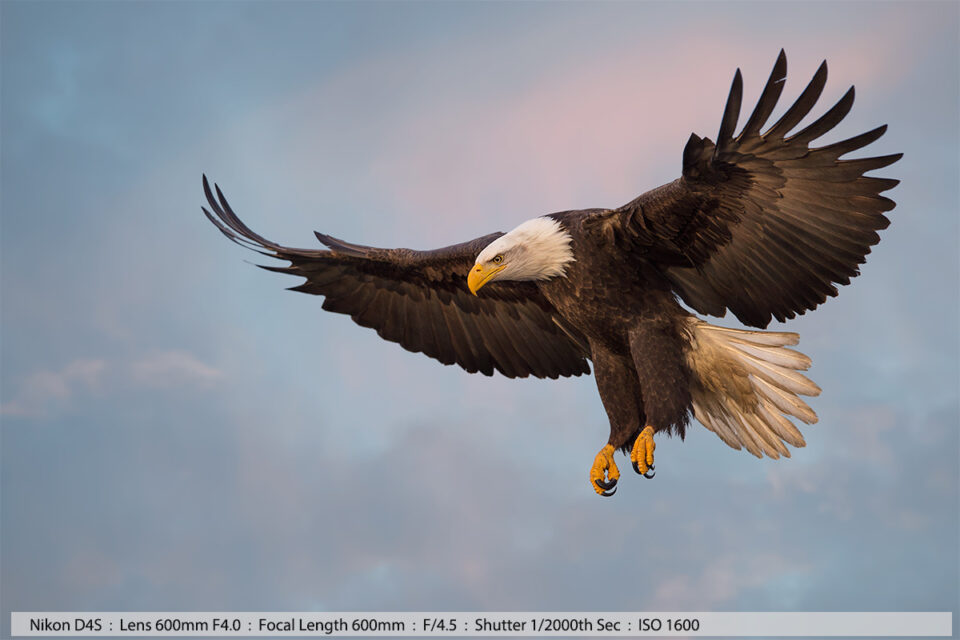
In the above photo, the eagle was coming in to land on a favorite tree branch. Eagles tend to have favorite trees and perch spots on the ponds they live. With patience and long batches of time on the water in my small boat, I have learned those trees and perches. Now the eagles occasionally drop by my boat, especially if I look like I’m fishing!
I suppose this is also a kind of photographer’s ethics guide, as it touches on the balance of intrusion and disturbance versus the need and greed to get the photo at any cost.
In the early days, I truly did make some terrible mistakes – it was mainly due to my ignorance. I have become much better as the ambassador for the wildlife I photograph.
At the end of the day, there are risks with wildlife photography, both for you and the animal. Just remember that when you go out. Now, get out there and have some fun, and get some great photos!